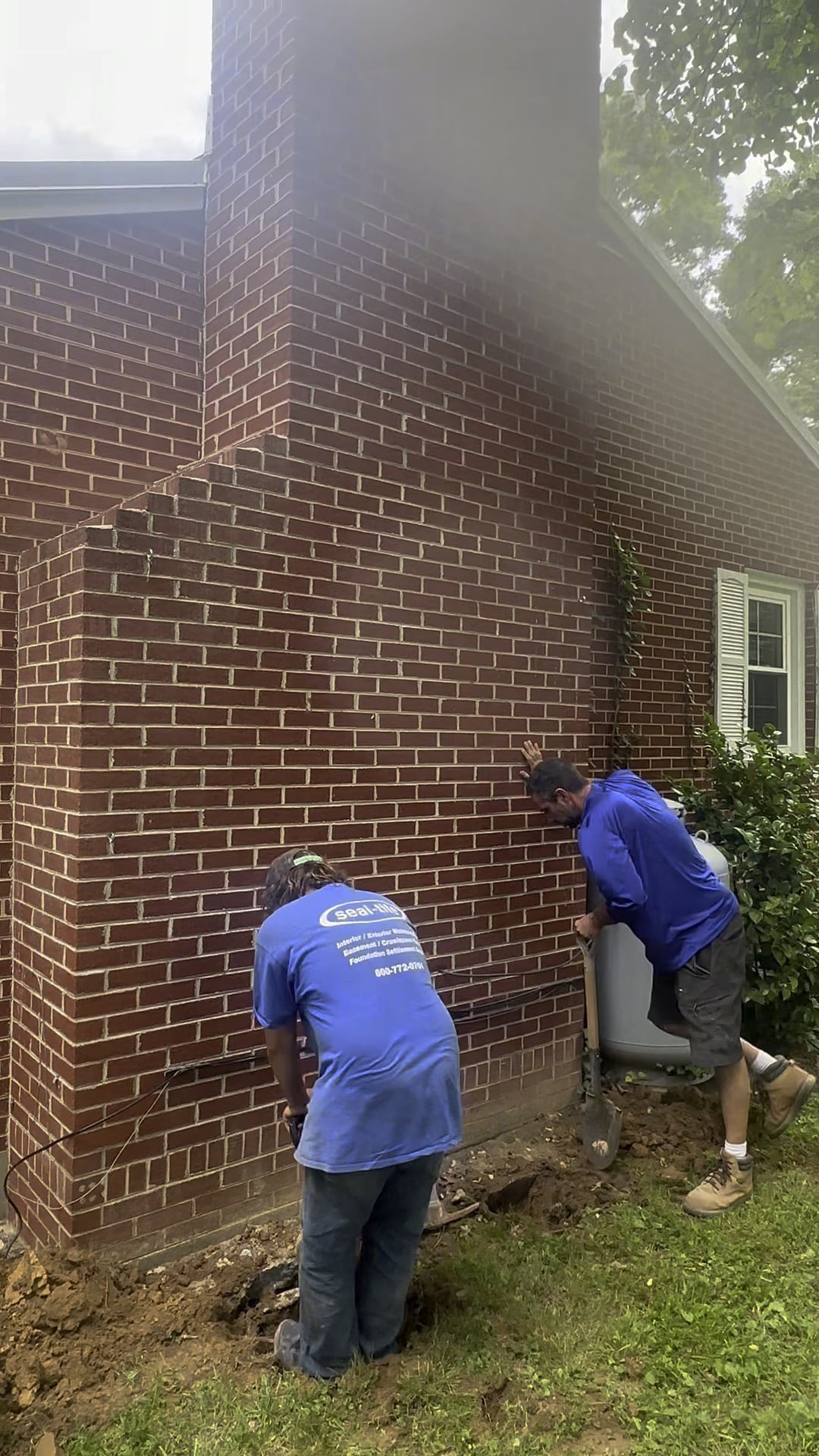
You’ve recently waterproofed your property and you’re feeling pretty confident about the protection it offers. But, are you certain about its long-term effectiveness? Should you consider asking about a follow-up inspection? A post-waterproofing inspection can help identify any potential issues before they turn into major problems. It’s an opportunity to verify the quality of work done and to guarantee your investment stands the test of time. Let’s explore why making this request might be one of the smartest decisions for the longevity of your property.
Key Takeaways
- Follow-up inspections after waterproofing ensure the effectiveness of the application and maintain property value.
- Initial inspection should occur 1-2 weeks after waterproofing, with bi-annual or annual checks recommended thereafter.
- Inspections detect issues like ineffective moisture barriers, hidden leaks, and structural damage, ensuring early problem resolution.
- Understanding inspection results helps identify recurring issues, track progress over time, and adjust maintenance strategies.
- Engaging professionals for inspections and addressing minor issues promptly are key to preventing larger, costly damages.
Understanding the Importance of Follow-Up Inspections
You might think the job is done once your property’s been waterproofed, but that’s far from the truth.
There’s more to it than meets the eye. The follow-up importance shouldn’t be underestimated. Yes, it’s vital to have your space waterproofed, but it’s equally important to monitor the progress and effectiveness of the job done.
You see, waterproofing isn’t a one-and-done task. It needs regular scrutiny. That’s where inspection frequency comes into play.
Regular follow-ups can help identify any potential issues early on, saving you from significant damage and additional expenses down the line.
It’s like getting a regular check-up for your health. You’re not just looking for problems; you’re ensuring everything’s working as it should.
Timing Your Post-Waterproofing Inspection
Knowing when to schedule your follow-up inspection after waterproofing is vital.
This timing isn’t just about ticking a box; it’s about ensuring your home’s protection against moisture damage.
Inspection Scheduling Essentials
After having your property waterproofed, it’s vital to schedule a follow-up inspection at the right time. This step guarantees the work’s quality and addresses any potential issues.
There’s a careful balance to strike when determining the inspection frequency. Too soon, and the waterproofing may not be fully settled; too late, and any issues may have escalated.
When scheduling, consider these essential points:
- Timing: Ideally, the first inspection should be within a week or two after the waterproofing process is completed. This timeframe allows any applied materials enough time to dry and adhere properly.
- Inspector qualifications: Verify you’re hiring a qualified inspector. They should have the necessary training and certification to conduct a thorough and accurate assessment.
- Regularity: After the initial inspection, regular check-ups are advisable. Depending on the quality of the waterproofing job and your property’s conditions, you might need bi-annual or annual inspections.
Post-Waterproofing Checkpoints
Regularly conducting post-waterproofing inspections is essential to guarantee the longevity and effectiveness of the waterproofing job. It’s not just about slapping on a waterproof layer and forgetting about it. You’ve got to stay on top of things.
Start by checking your drainage solutions. Are they working as they should? Do you see any standing water around your property? If so, it might mean your drainage isn’t functioning correctly. You’ve invested in these solutions, so make sure they’re performing efficiently.
Next, inspect your moisture barriers. These barriers are your home’s first line of defense against water damage. They should be intact, with no signs of wear and tear. If you see any cracks or gaps, that’s a red flag. Water could potentially seep through, defeating the whole purpose of waterproofing.
Potential Issues Detected During Inspection
Now, let’s turn our attention to potential issues you might find during your inspection.
You could still be dealing with unresolved water leakage problems or you might discover the waterproofing materials aren’t as effective as you hoped.
Another concern could be detecting structural damage that wasn’t visible before.
Unresolved Water Leakage Problems
Despite diligent waterproofing efforts, you might occasionally encounter unresolved water leakage problems. This might occur due to inaccurate leak source identification during the initial inspection. The unidentified leakage spot continues to be a problem, despite the waterproofing process.
It’s critical to conduct a follow-up inspection after waterproofing to ascertain that these unresolved issues are detected.
There are several ways to identify these hidden water leakage problems. One of the most reliable methods is moisture mapping. It’s a technology that pinpoints the exact location of the moisture, giving a clear picture of the leak source.
However, you can’t just rely on technology alone.
Here are three things to reflect on:
- Regular monitoring: Keep an eye out for signs of water damage like discoloration or mold growth.
- Professional help: Don’t hesitate to call in professionals if you’re unsure about the leak source.
- Maintenance: Regular maintenance helps prolong the effectiveness of your waterproofing solution.
Ineffective Waterproofing Materials
Even with the best intentions, sometimes waterproofing can fail due to the use of ineffective materials. You might be wondering, “How does this happen?” Well, it’s not always about the application method.
Often, it’s the quality of the materials used that can lead to waterproofing failures. Imagine spending time and resources to protect your property from water damage, only to find out that the waterproofing materials used were of low quality or unsuitable for the task.
It’s a frustrating situation, isn’t it? That’s why it’s essential to guarantee that the materials used in your waterproofing project are high-quality and fit for purpose.
Ineffective materials can cause a range of issues, from minor leaks to significant dampness and mold growth. These problems can be difficult to rectify and can seriously damage your property’s value.
A thorough follow-up inspection can help to identify any issues and guarantee that the materials used are up to the task.
Structural Damage Detection
During the follow-up inspection, it’s crucial to pay close attention to any signs of structural damage. This damage assessment phase is critical to guarantee the structural integrity of your property. Even minor cracks can indicate significant issues that may not be visible to the untrained eye.
Waterproofing doesn’t just shield your home from water leakage but also plays a key role in maintaining the structural integrity of your building. It’s important to note that problems mightn’t be evident immediately after the waterproofing job. Over time, however, signs of wear and tear may show, indicating potential structural damage.
When dealing with structural damage, here are a few things to keep in mind:
- Always rely on professionals for damage assessment. They’ve the training and expertise to identify potential problems that you might overlook.
- Take immediate action when structural damage is detected. Delaying repairs can lead to more severe issues and higher repair costs.
- Regular inspections are key to maintaining the structural integrity of your property. Don’t wait for problems to manifest. Instead, proactively address them to prevent potential damage.
The Process of a Follow-Up Inspection
After your home’s waterproofing treatment, a critical step is the follow-up inspection. You might wonder, what’s the big deal about this inspection process? The answer is simple: it’s not just a formality, it’s a follow-up necessity.
First off, this inspection guarantees that the treatment was done correctly. It’s a check on the workmanship and the quality of the materials used. The inspector will look for any signs of improper application or any areas that were missed during the treatment.
You wouldn’t want to find out during the next heavy rain that the waterproofing wasn’t up to scratch, would you?
Next, the inspection process allows for the detection of any new or unsuspected issues. Often, the process of waterproofing can reveal other structural problems that you mightn’t have been aware of.
This follow-up gives you the opportunity to nip those issues in the bud.
Lastly, the inspection offers you peace of mind. It’s always better to be safe than sorry, right? When it comes to your home’s structural integrity, there’s no room for guesswork.
A thorough follow-up inspection guarantees you’re on the safe side.
Interpreting Your Inspection Results
With the inspection complete, understanding your results becomes the next significant step. It’s not enough to just get the inspection done, you have to understand the results to make sure your waterproofing is effective and long-lasting.
The inspection techniques used will vary, but it’s essential to understand the findings. The report may contain technical jargon, so don’t hesitate to ask your inspector to explain anything you’re unsure about. Remember, it’s your property and you have the right to understand everything about its condition.
Inspection frequency also plays a key role in interpreting results. If inspections are carried out regularly, you can compare the results and see if there are any recurring issues or improvements.
Here are a few tips to help you interpret your inspection results:
- Look for patterns: If the same issue keeps popping up, it may be a sign of a bigger problem.
- Ask questions: Don’t be afraid to ask your inspector to explain their findings in layman’s terms.
- Keep records: Maintain a record of all inspections. This can help in tracking the progress of your waterproofing over time.
Understanding your inspection results is a vital step in maintaining your property’s health.
Maintaining Your Waterproofing Investment
Investing in waterproofing is a smart move, but it’s only as good as the care and maintenance you put into it.
Waterproofing maintenance isn’t a one-time thing, it’s an ongoing process that requires your attention and effort.
Think of it as investment protection. You wouldn’t buy a car and never service it, right? Same goes for your waterproofing investment.
Regular maintenance can detect early signs of wear and tear, preventing small issues from turning into big, expensive problems. It’s about sustaining the effectiveness of the waterproofing system over time.
How do you maintain it, you ask? Start with regular inspections. Check for cracks, leaks, or any signs of water damage.
Keep an eye on the drainage system too. Make sure it’s not clogged and it’s functioning as it should.
Also, don’t forget about professional check-ups. Experts have the right tools and knowledge to spot issues you might miss.
They can provide you with valuable advice and steps to keep your waterproofing system in top shape.
Debunking Waterproofing Misconceptions
Let’s shatter some common misconceptions about waterproofing. Misinformation can lead to poor decision-making and inadequate protection for your property.
Understanding the facts helps guarantee you make the best choices for your waterproofing needs.
Here are some prevalent waterproofing myths:
- Myth 1: Waterproofing isn’t necessary for new constructions. The fact is, even new buildings can suffer from water damage. Don’t assume that because it’s new, it’s immune.
- Myth 2: All waterproofing methods are the same. This is far from true. There’s a range of methods available, each suited to different situations. It’s important to choose the right one for your needs.
- Myth 3: Waterproofing is a one-time job. In reality, it requires regular inspection and maintenance for peak performance.
Don’t let common misconceptions steer you wrong. It’s vital to separate fact from fiction when it comes to waterproofing your property.
Frequently Asked Questions
What Is the Average Cost of a Follow-Up Waterproofing Inspection?
You’re curious about the average cost of a follow-up waterproofing inspection.
While prices can vary based on location and the size of your property, you’ll likely find that most inspection costs fall between $100 and $500.
Remember, these are just averages. The exact fee could be higher or lower depending on the specifics of your waterproofing service.
Can I Conduct a Follow-Up Inspection by Myself or Do I Need a Professional?
Yes, you can conduct a DIY inspection after waterproofing.
However, you might miss critical points that a professional assessment would catch.
Remember, professionals have trained eyes and extensive experience.
They’re better equipped to identify potential issues and suggest necessary repairs.
What Are Some Signs That My Waterproofing System Has Failed After the Initial Inspection?
Certainly, you should keep an eye out for water damage signs indicating a potential waterproofing failure.
These signs might include damp walls, peeling paint, or a musty odor.
If you notice unexplained moisture or mold growth, it’s possible your waterproofing system hasn’t worked as expected.
You don’t want to ignore these signs, so consider getting a professional inspection to confirm any issues and determine the best course of action.
How Does Weather Affect the Timing and Results of a Follow-Up Waterproofing Inspection?
Weather patterns can greatly impact your follow-up waterproofing inspection. Heavy rainfall or snow can potentially expose any weaknesses in the waterproofing system.
Consequently, it’s best to schedule the inspection after such weather events. Remember, timing’s essential. You don’t want to check too soon or too late.
It’s about finding the balance to guarantee your home’s protection against water damage. So, always consider weather patterns when planning your inspection timing.
Are There Insurance Policies That Cover Potential Damage Discovered in Follow-Up Waterproofing Inspections?
Yes, you should inquire about insurance policies that cover potential damage found in follow-up waterproofing inspections.
Not all insurance providers offer this, but it’s worth checking out. If they do, it’ll help cover damage claims.
Remember, it’s about protecting your investment. Don’t be shy to ask your insurance company or potential insurers about this specific coverage.
It’s your right to know and it could save you a hefty sum in the future.
Conclusion
So, should you ask about follow-up inspections after waterproofing? Absolutely! They’re essential for guaranteeing your waterproofing’s effectiveness and spotting potential problems early. Regular check-ups help safeguard your property’s structural integrity and ward off major damage. By discussing a follow-up plan, you’re taking steps to protect your investment and guarantee any necessary upkeep is tackled promptly. Don’t buy into misconceptions – your waterproofing is a long-term investment that deserves diligent care.

Seal-tite Basement Waterproofing Co. is a full service basement environment contractor. We carry an A+ Better Business Bureau rating. We repaired over 40,000 homes and structures in Virginia, West Virginia, Tennessee, and North Carolina. We are fully insured and licensed. We have worked in all types of locations, including residential and commercial locations, government agencies, colleges, hospitals, churches, and condo associations.
Seal-tite® offers a lifetime transferable warranty. We carry a Class A Contractor’s License and we are fully insured. Our satisfied customers range from government agencies to businesses, hospitals, colleges, churches, and thousands of homeowners. Your home is probably the single largest investment you will make in your lifetime. Don’t wait, call Seal-tite® to help make your home dry, safe and livable.

